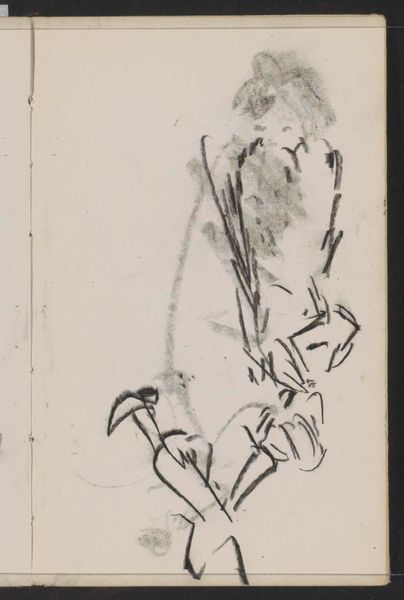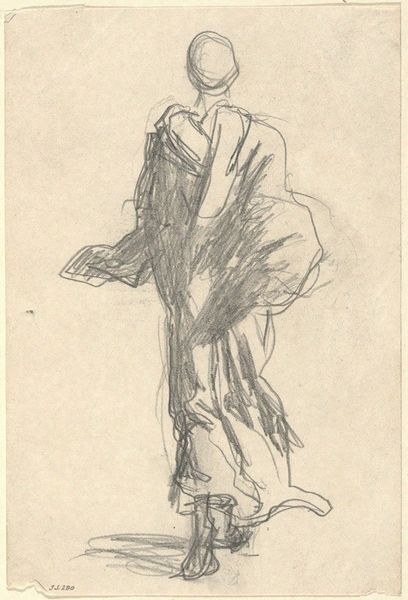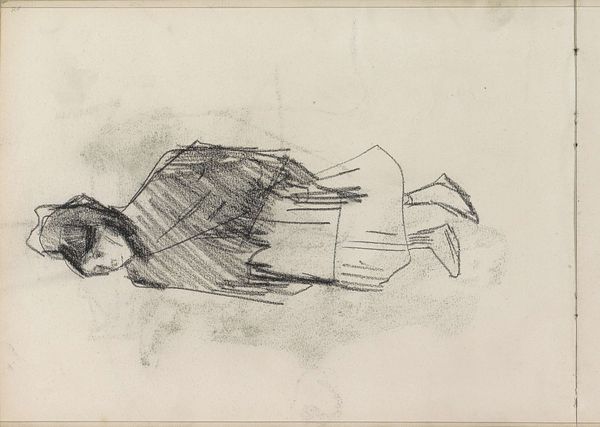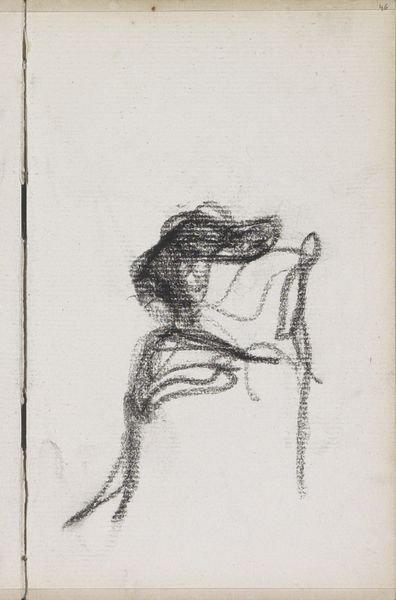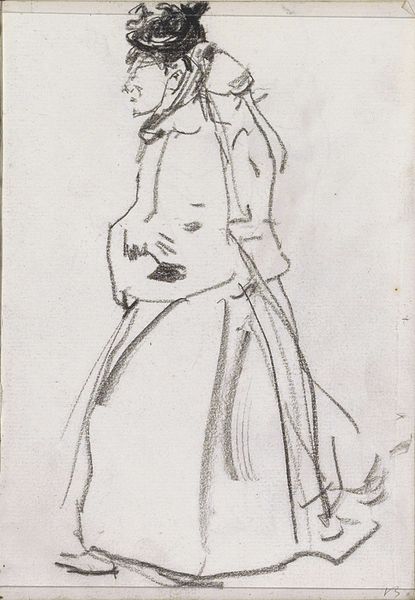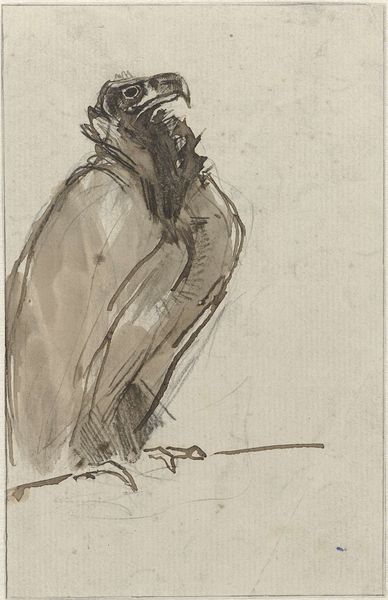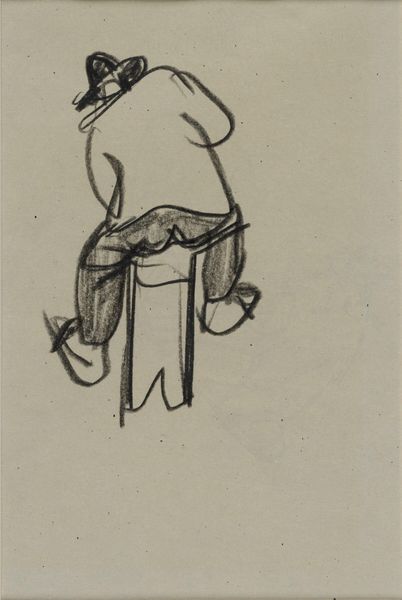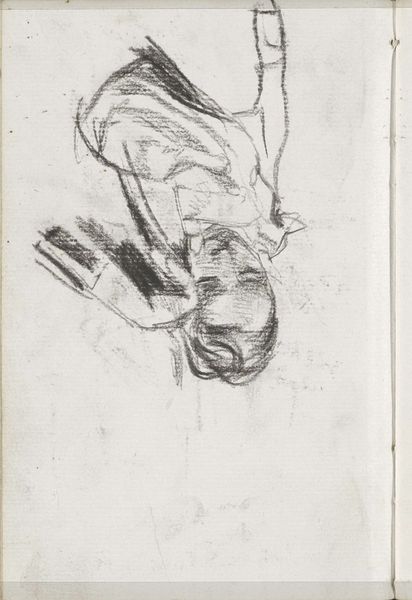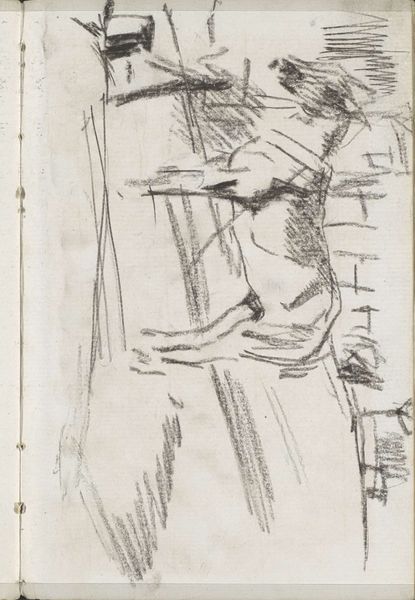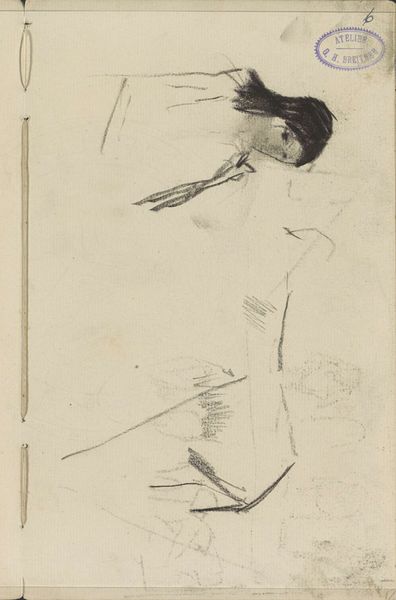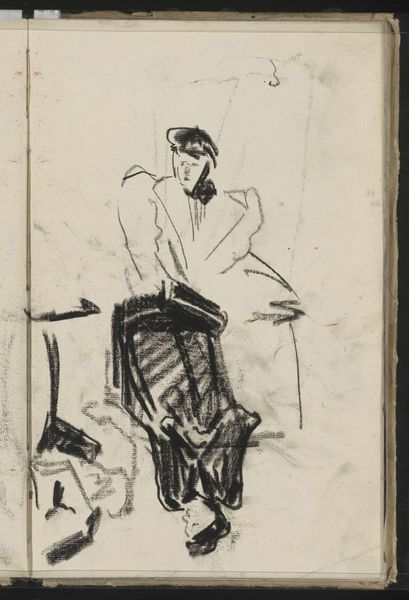
drawing, pencil
#
drawing
#
figuration
#
pencil
#
modernism
#
realism
Copyright: Rijks Museum: Open Domain
Editor: This pencil drawing by Isaac Israels, made sometime between 1875 and 1934, is called "Vooroverbuigende Afrikaanse figuur, mogelijk een danser"—"Bending African Figure, Possibly a Dancer." The sketchiness gives it such a raw, immediate feel. What are your initial thoughts about this figure? Curator: The title itself, "possibly a dancer," acknowledges the uncertainty inherent in representing figures from different cultural backgrounds, especially within a colonial context. This era saw the rise of ethnographic studies, which, although claiming scientific objectivity, were often steeped in power dynamics and misrepresentation. What tensions do you perceive arising from this depiction? Editor: I guess there's an element of objectification. It feels like a quick study, a capture of exoticism rather than an engagement with the person. The downward bend makes her seem vulnerable. Curator: Precisely. Consider the power dynamics. Israels, as a European male artist, is observing and documenting a woman of African descent. The "bend" could signify not only a physical posture but also a metaphorical bending to colonial power structures. What critical lenses – feminist, postcolonial – can we apply here to unearth deeper meaning? Editor: Thinking about it that way definitely changes how I see the image. The realism becomes less about accuracy and more about a specific point of view, shaped by its historical context. How do you think the 'modernism' aspect comes into play? Curator: Modernism, with its rejection of academic tradition, often looked to non-Western art for inspiration. However, this fascination sometimes led to appropriation and a romanticized view of other cultures. Israels’ sketch might reflect this trend. Editor: That's so complex. I initially just saw an interesting figure study, but there are all these layers of power and representation that I missed. Curator: Art invites us to see the world through different perspectives. Understanding the socio-historical context allows us to critically examine these depictions and challenge any hidden biases or assumptions.
Comments
No comments
Be the first to comment and join the conversation on the ultimate creative platform.
